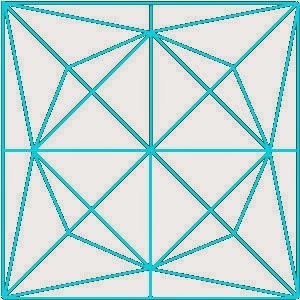finding triangles

You can find an attached picture with this puzzle. Can you find out how many triangles are formed in this figure?
No vote yet
1 vote

You can find an attached picture with this puzzle. Can you find out how many triangles are formed in this figure?
Easy Math Editor
This discussion board is a place to discuss our Daily Challenges and the math and science related to those challenges. Explanations are more than just a solution — they should explain the steps and thinking strategies that you used to obtain the solution. Comments should further the discussion of math and science.
When posting on Brilliant:
*italics*or_italics_**bold**or__bold__paragraph 1
paragraph 2
[example link](https://brilliant.org)> This is a quote# I indented these lines # 4 spaces, and now they show # up as a code block. print "hello world"\(...\)or\[...\]to ensure proper formatting.2 \times 32^{34}a_{i-1}\frac{2}{3}\sqrt{2}\sum_{i=1}^3\sin \theta\boxed{123}Comments
First I'm going to focus on the properties of triangles. A triangle requires 3 lines to make it, and in an infinite plane, if there are three non-parallel lines that don't intersect, they will make a plane. If these lines were "ideal"(3 lines do not intersect, the plane is infinite, the lines are not parallel, the lines are infinite), this would be a simple combinatoric problem. There are 32 lines in total. (4 per corner, 4 in the center, four surrounding the center, and 8 arranged in an octagon). Therefore there will be 4960 triangles. But it's not that simple. So, I'm going to try an solve an alternate problem that includes parallel lines. If two lines are parallel they can not create a triangle together. There are 4 sets of 3 parallel lines and 4 sets of 2 parallel lines. This is actually getting really complicated and this method doesn't factor in how all the special properties of the lines interact with each other. I'm taking a big model and I'm trying to tack on various constraints to it, which is a type of SUBTRACTIVE LOGIC. However, this problem has TOO MANY CONSTRAINTS.
RE APPROACH!
Instead I'm going to focus on vertexes with a more specific approach. Notice how the whole square is symmetrical 8-fold. It can be split into 8 identical pieces. When splitting the model into half, I have to consider the triangles formed between those two peices, so Triangles in piece A +Triangles in piece B +Triangles formed by A and B = total triangles For a triangle to be formed by lines from A and B, there must be a line that spans both. A spanning triangle will always have this line. Lines that cross the border between pieces can be used to find triangles. It's easiest to count all triangles associated with a line, then afterwards, ignore any triangles made with that line. In 1/8th of the model there are 8 triangles. I counted manually, no magic here. When adding another 1/8th (across a diagonal), there is one line that crosses the border. 3 triangles can be made with the line 8+8+3=19 (1/4th model) With 1/2 of the model, I find two lines that pass through both parts. I analyzed the vertexes contained by the lines to find any triangles. There were 3 triangles. 19+19+3=41 There are 5 crossing lines found when putting the two halves together, and 10 triangles can be found. 41+41+10=92
92 triangles can be found.